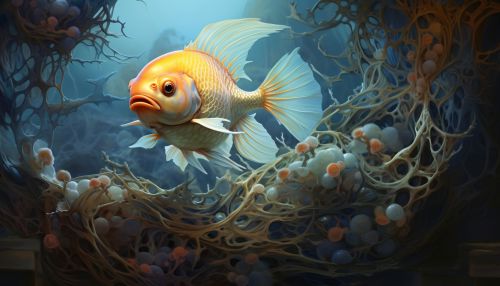The Evolution of Parental Investment in Fish
Introduction
Parental investment in fish refers to the resources expended by parents to increase the survival rate of their offspring. This investment can take many forms, including the production of large, nutrient-rich eggs, guarding of nests, and even the care of young after they have hatched. The evolution of parental care in fish is a fascinating topic, as it involves a complex interplay of ecological, physiological, and behavioral factors.


Evolutionary Background
The concept of parental investment was first proposed by Robert L. Trivers in 1972, who defined it as any investment by the parent in an individual offspring that increases the offspring's chance of surviving (and hence reproductive success) at the cost of the parent's ability to invest in other offspring. This concept has been applied to a wide range of organisms, including fish.
In the context of fish, parental investment strategies can range from producing a large number of small eggs with no further parental care, to producing a small number of large eggs with extensive parental care. The evolution of these different strategies is thought to be driven by a combination of ecological factors (such as predation pressure and resource availability) and physiological constraints (such as body size and energy reserves).
Factors Influencing Parental Investment
- Ecological Factors###
One of the primary ecological factors influencing the evolution of parental investment in fish is predation pressure. In environments where predation pressure is high, there may be strong selective pressure for parental behaviors that increase offspring survival. For example, some species of fish guard their nests from predators, while others build elaborate nests or brood their eggs in their mouths to protect them from harm.
Resource availability is another important ecological factor. In environments where resources are scarce, it may be more beneficial for parents to invest heavily in a few offspring, ensuring that those offspring have the resources they need to survive. Conversely, in environments where resources are abundant, parents may be able to afford to invest less in each individual offspring, instead producing a larger number of offspring.
- Physiological Factors###
Physiological constraints also play a key role in the evolution of parental investment in fish. For example, body size can influence the number and size of eggs that a female can produce. Larger females can generally produce more, larger eggs, and may therefore be able to invest more heavily in their offspring. Energy reserves are another important physiological constraint. Parents must balance the energy they devote to their own survival and growth against the energy they invest in their offspring.
Variation in Parental Investment Strategies
Parental investment strategies in fish can vary widely, even within the same species. This variation can be influenced by a number of factors, including the age and condition of the parents, the environmental conditions, and the presence of predators.
- Egg Size and Number###
One of the most obvious ways in which parental investment can vary is in the size and number of eggs produced. As mentioned earlier, larger females can generally produce more, larger eggs. However, producing larger eggs requires more resources, and so there is a trade-off between egg size and number. This trade-off can be influenced by the environmental conditions. For example, in environments where resources are scarce, females may produce fewer, larger eggs.
- Nest Building and Guarding###
Some species of fish build nests for their eggs, which can range from simple depressions in the sand to elaborate structures made from vegetation and other materials. Building a nest can provide a safe place for the eggs to develop, but it also requires a significant investment of time and energy. Similarly, guarding the nest from predators can increase the survival rate of the eggs, but it also requires the parent to remain with the nest and potentially forego other opportunities.
- Brood Care###
In some species of fish, one or both parents care for the young after they have hatched. This can involve behaviors such as cleaning and aerating the eggs, defending the young from predators, and even feeding the young. Brood care can significantly increase the survival rate of the young, but it also requires a significant investment of time and energy.
Evolutionary Consequences of Parental Investment
The evolution of parental investment in fish can have a number of important consequences. One of the most significant is the potential for sexual selection. In species where one sex invests more heavily in the offspring than the other, there can be strong selective pressure for traits that increase the individual's chances of attracting a mate.
Parental investment can also influence the life history strategies of fish. For example, species that invest heavily in their offspring may have longer lifespans and slower growth rates, as they need to devote more of their resources to their offspring. Conversely, species that invest less in their offspring may have shorter lifespans and faster growth rates, as they can devote more of their resources to their own growth and reproduction.
Conclusion
The evolution of parental investment in fish is a complex process, influenced by a range of ecological and physiological factors. Understanding this process can provide valuable insights into the behavior and life history strategies of fish, and can also shed light on the broader principles of evolutionary biology.
